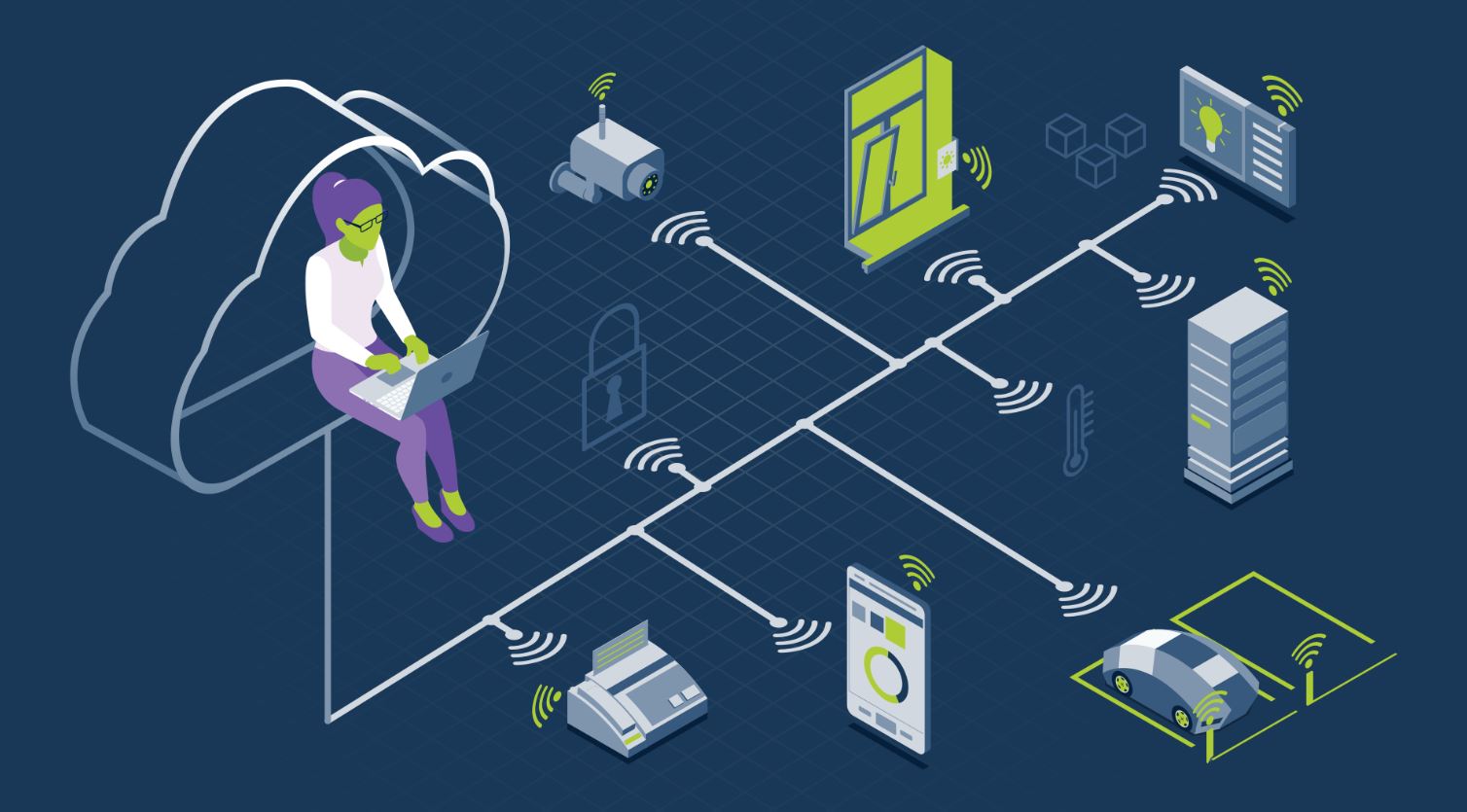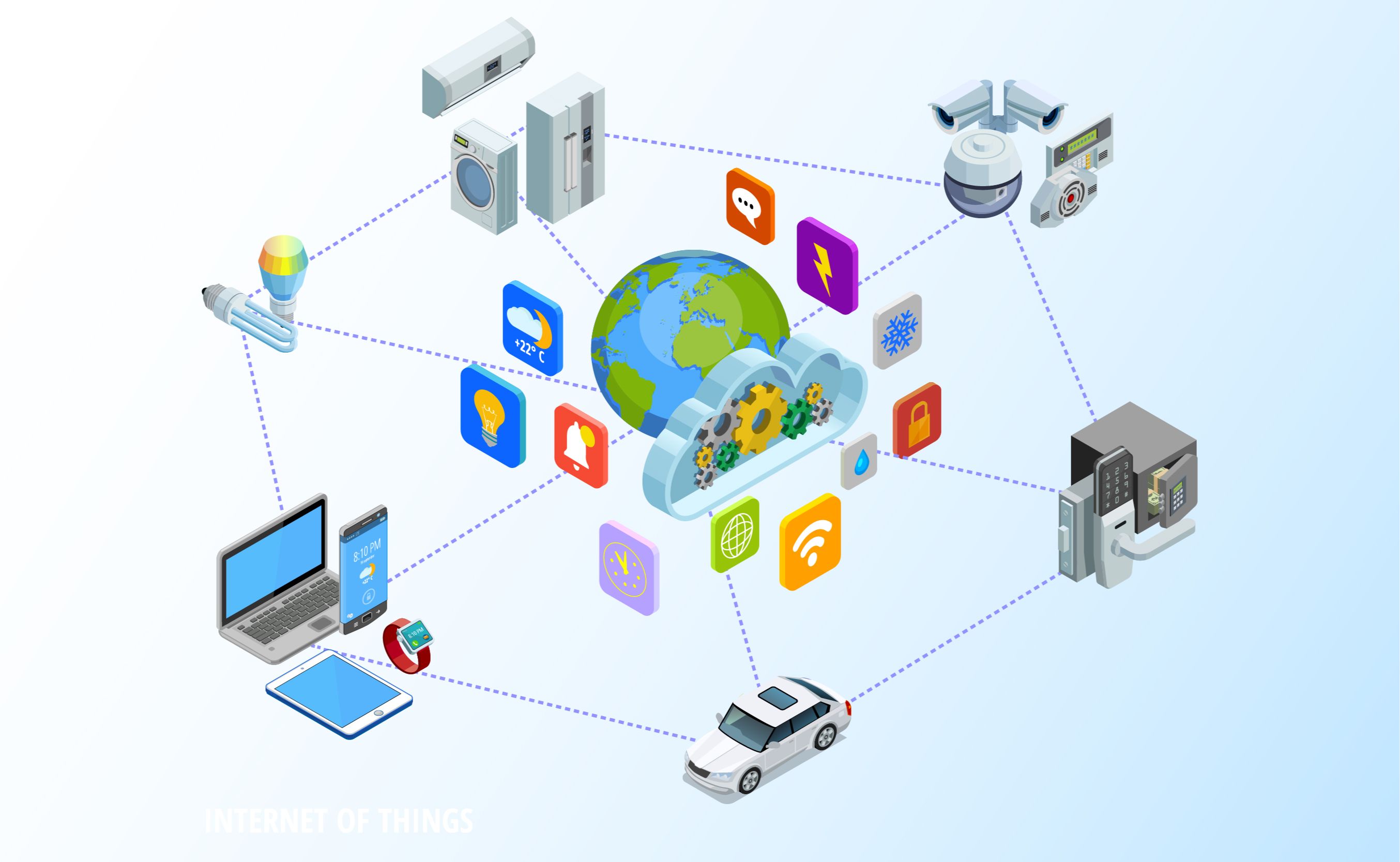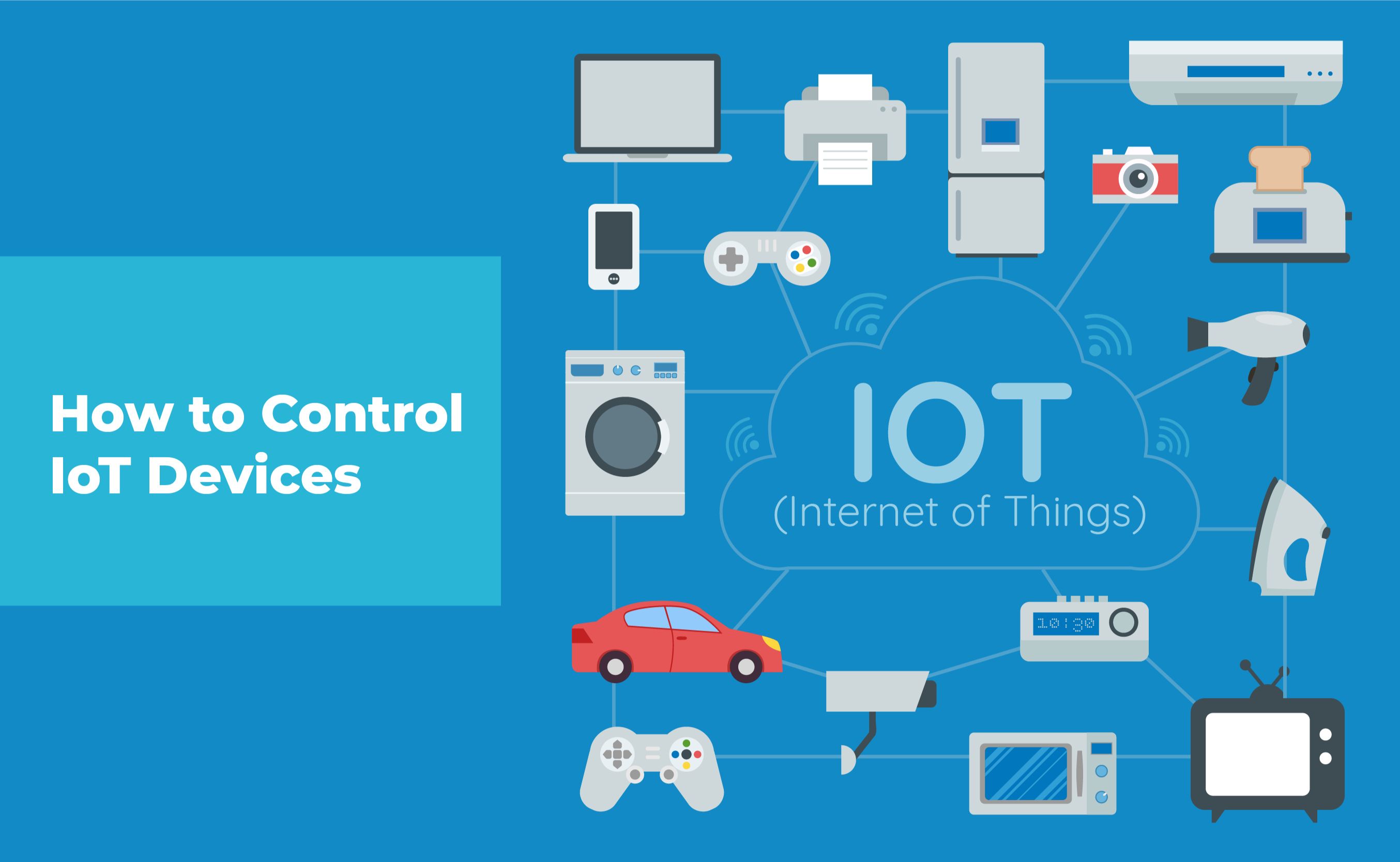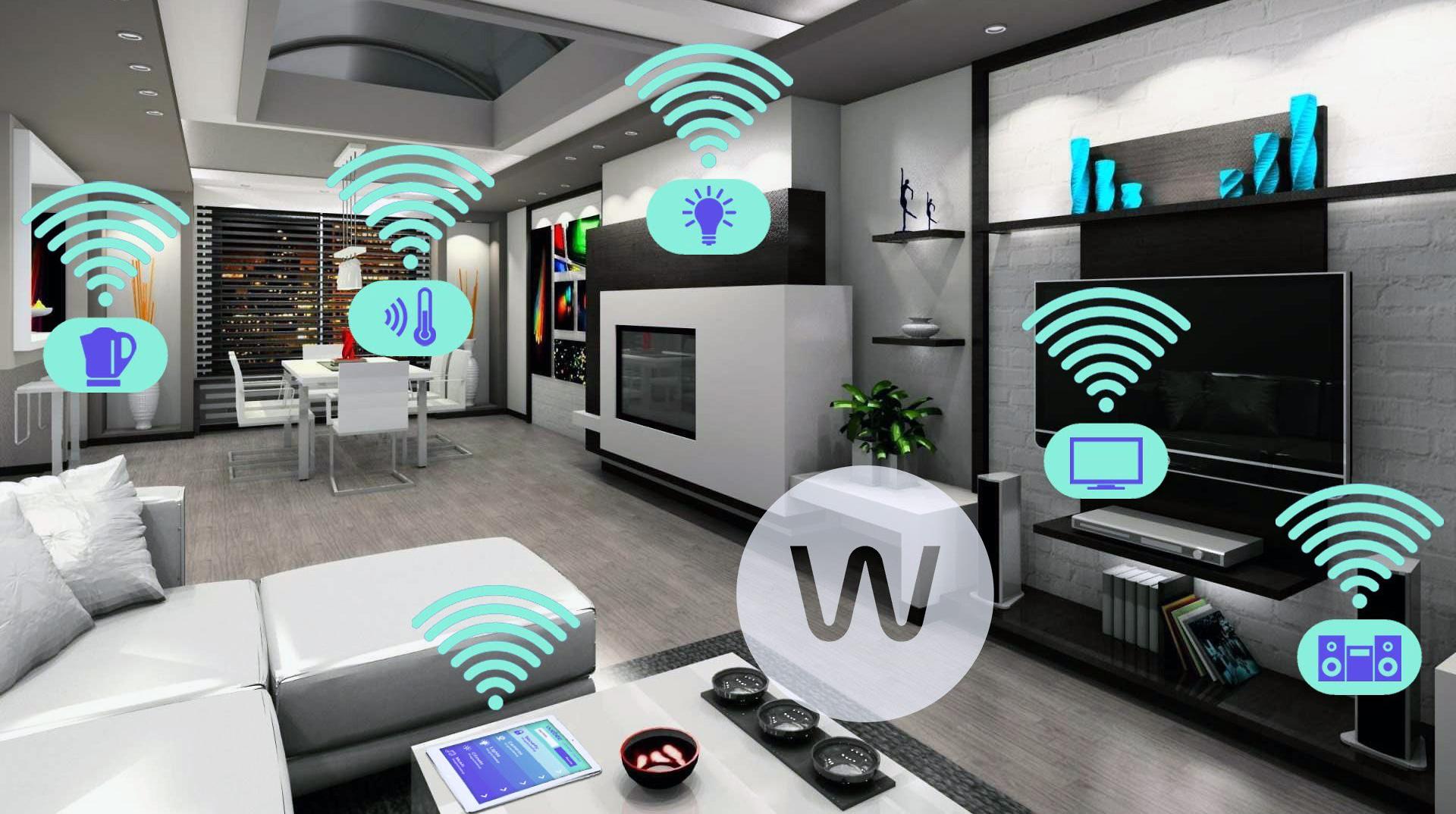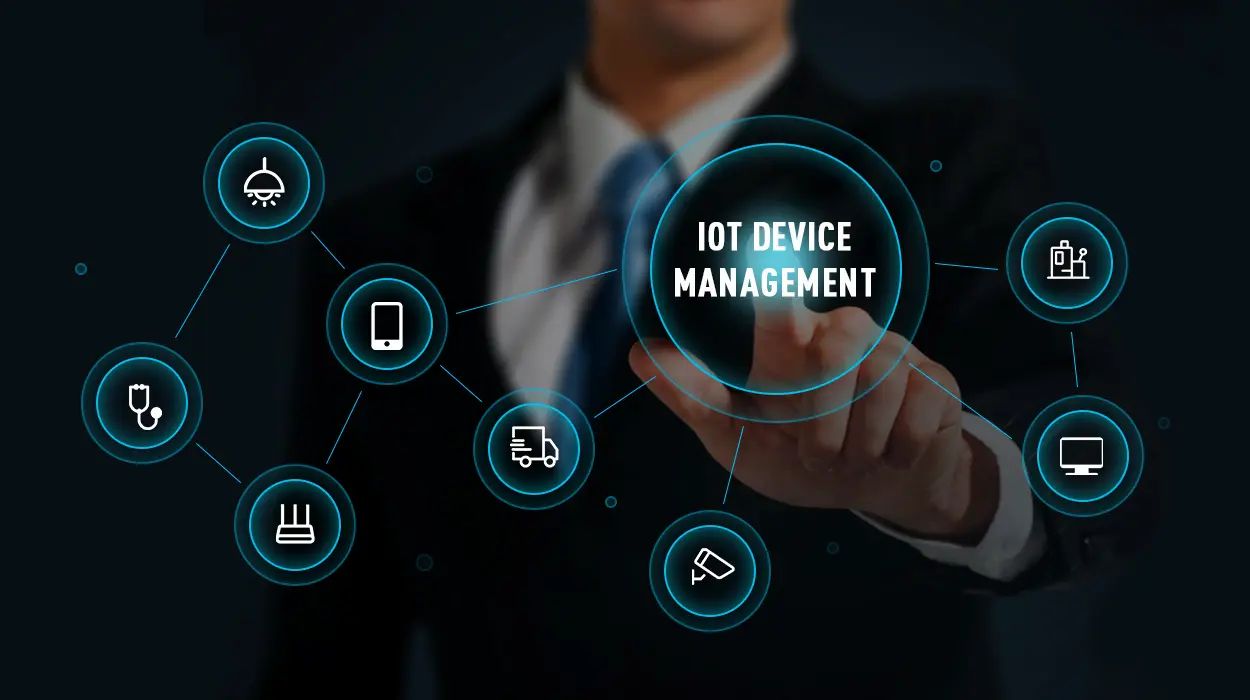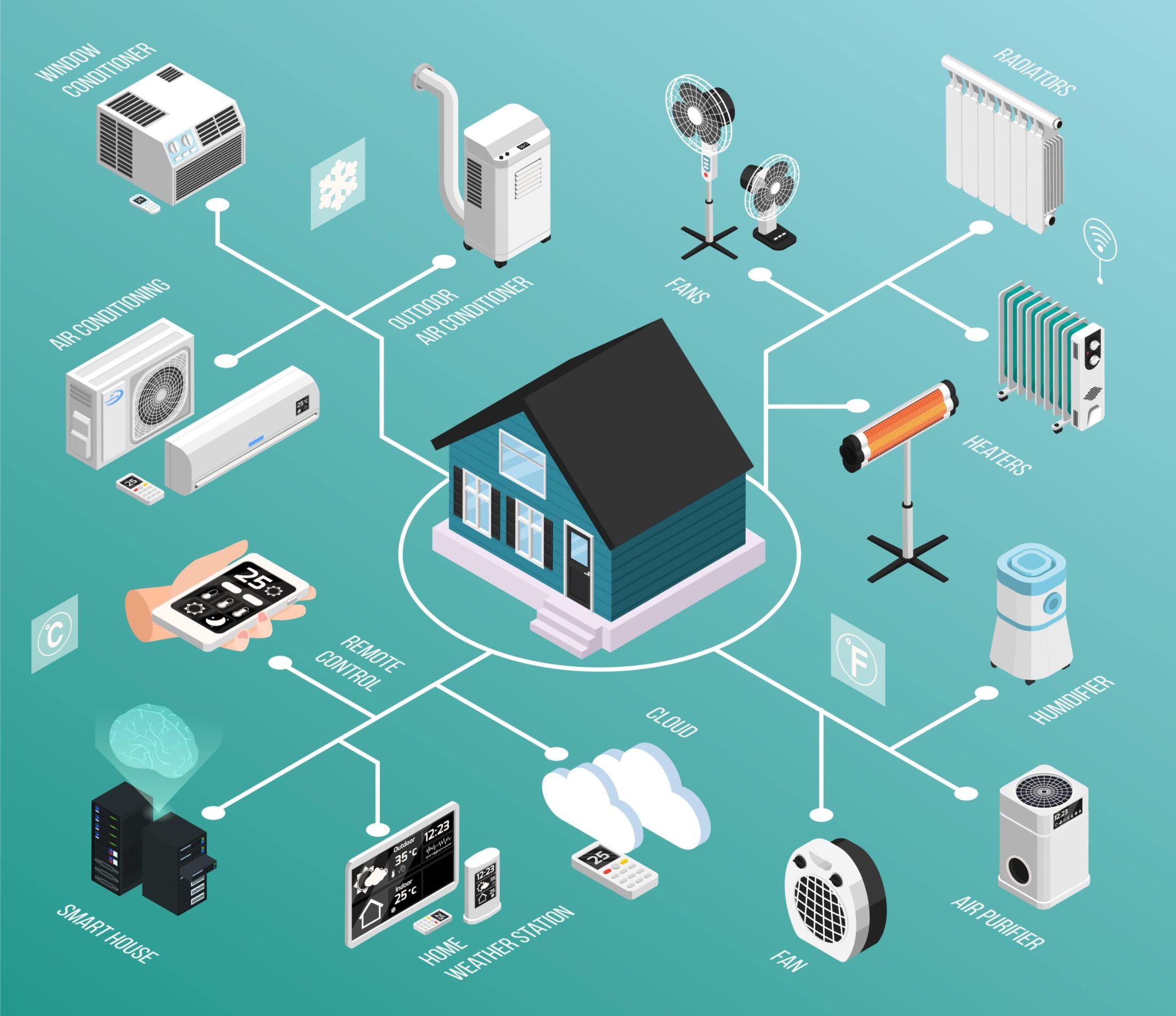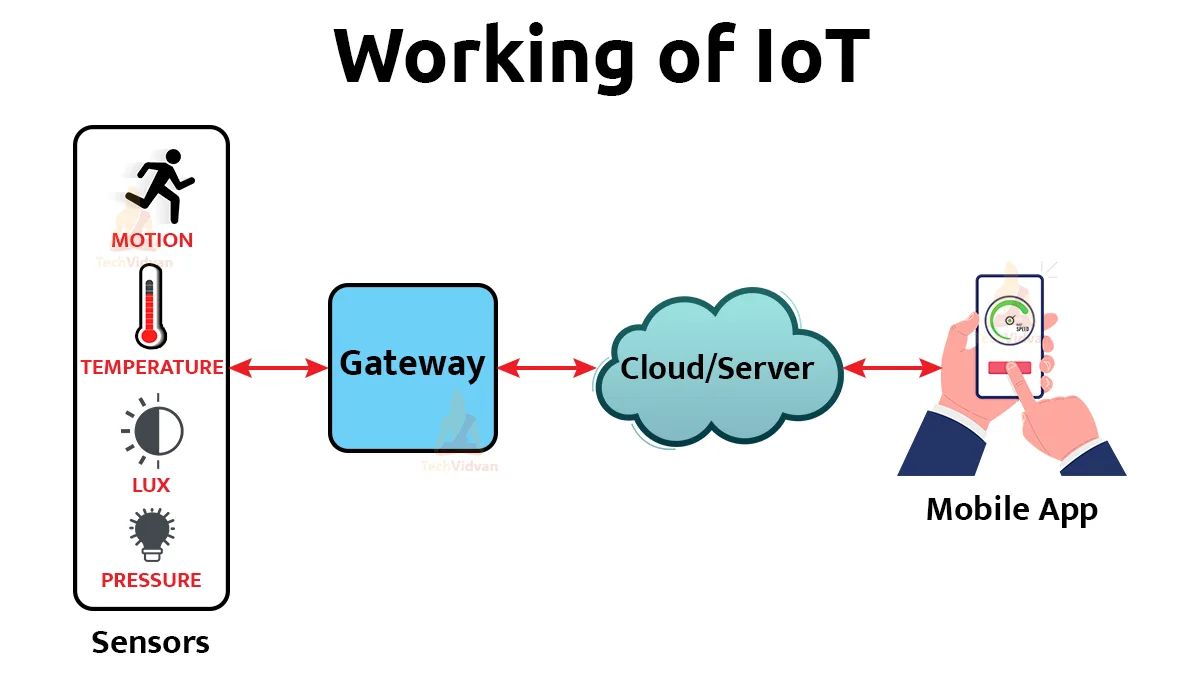Introduction
Welcome to the world of the Internet of Things (IoT) devices, where everyday objects are connected to the internet, enabling them to send and receive data. From smart home devices like thermostats and cameras to wearable devices and industrial equipment, IoT devices are becoming increasingly prevalent in our lives. One of the advantages of IoT devices is the ability to access and control them remotely, providing convenience and flexibility to users.
Imagine being able to adjust the temperature in your home while you’re away, or monitor your security cameras from the office. With remote access to IoT devices, you can do all this and more. In this article, we will explore different methods for accessing your IoT device remotely and discuss the advantages and considerations associated with each approach.
Whether you’re a tech-savvy individual or someone looking to dip their toes into the world of IoT devices, this guide will provide you with the insights you need to get started with remote access. Let’s dive in and discover how you can unlock the full potential of your IoT devices.
What is an IoT device?
An IoT device, or Internet of Things device, is a physical device that is connected to the internet and is capable of sending and receiving data. These devices can range from everyday objects like smart speakers and thermostats to more complex systems used in industrial settings. The concept behind IoT devices is to enable communication and data transfer between devices, allowing for automation, monitoring, and control.
IoT devices are equipped with sensors, processors, and communication capabilities that enable them to interact with the internet and other devices in their network. These devices collect and transmit data, which can be used for various purposes such as monitoring environmental conditions, tracking inventory, or controlling appliances.
One of the key features of IoT devices is their ability to connect and communicate with each other, forming what is known as the “Internet of Things.” This interconnected network of devices enables seamless data exchange and coordination, leading to improved efficiency and productivity in various domains.
IoT devices have made significant advancements in recent years, with an increasing number of households and businesses adopting these technologies. The widespread use of IoT devices has paved the way for smart homes, smart cities, and smart industries, revolutionizing the way we live, work, and interact with our surroundings.
As the IoT ecosystem continues to grow and evolve, it is crucial to understand how these devices work and how to harness their capabilities effectively. The ability to access and control IoT devices remotely is one of the key benefits that makes them so appealing and convenient. In the next section, we will explore the reasons why you might want to access your IoT device remotely.
Why would I want to access my IoT device remotely?
Remote access to IoT devices offers a myriad of advantages and conveniences that enhance our daily lives and provide valuable functionalities. Here are some key reasons why you might want to access your IoT device remotely:
- Convenience: Remote access allows you to control and monitor your IoT devices from anywhere in the world. Whether you’re at the office, on vacation, or simply in a different room, you can easily adjust settings, view data, and receive real-time notifications without being physically present.
- Efficiency: By accessing your IoT devices remotely, you can streamline tasks and automate processes. For example, you can remotely adjust your smart thermostat to save energy while you’re away or turn on your robotic vacuum cleaner to clean the house before you return.
- Security: Accessing your IoT devices remotely enables you to enhance the security of your home or office. You can monitor security cameras, receive alerts for unexpected activities, and remotely enable or disable devices like smart locks or alarm systems.
- Safety: Remote access allows you to ensure the safety of your loved ones or valuable assets. For instance, you can remotely control and monitor your smart home surveillance system to keep an eye on your children or receive alerts if there are any breaches in security.
- Peace of mind: Knowing that you can monitor and control your IoT devices remotely provides peace of mind. Whether it’s checking if you locked the front door, turning off appliances that were accidentally left on, or receiving alerts for potential issues, remote access ensures that you are always connected and in control.
These are just a few examples of the benefits of remote access to IoT devices. The ability to control and monitor your devices from anywhere empowers you to manage your environment, optimize energy usage, and stay connected to the things that matter most to you.
Now that we understand the advantages of remote access, let’s explore the various methods by which you can access your IoT device remotely.
How do I access my IoT device remotely?
There are several methods available for accessing your IoT device remotely. The choice of method depends on factors such as the type of device, network configuration, and security requirements. Let’s explore three common options:
- Option 1: Use a VPN (Virtual Private Network)
- Option 2: Port Forwarding
- Option 3: Cloud-based Solutions
A VPN creates a secure connection between your device and the network where the IoT device is located. It acts as a tunnel, encrypting the data and providing a secure pathway for communication. By connecting to the VPN, you can access your IoT device as if you were on the same network, even if you are miles away.
The advantage of using a VPN is that it offers a high level of security, protecting your data from potential threats. However, setting up and configuring a VPN can be complex, and it may require additional hardware or software.
Port forwarding involves opening specific ports on your router to allow incoming connections to your IoT device. By setting up port forwarding, you can access your device directly from the internet using its public IP address and the assigned port.
This method is relatively straightforward to set up, but it introduces potential security risks. Opening ports on your router can make your network more vulnerable to unauthorized access if not configured correctly.
Many IoT devices offer cloud-based solutions that allow you to access and control your devices remotely. These solutions typically involve connecting your IoT device to a cloud platform provided by the device manufacturer. From there, you can use a web portal or mobile app to interact with your device.
Cloud-based solutions are often user-friendly and convenient, providing a seamless way to access your IoT devices from anywhere. However, it’s important to consider the privacy and security implications of storing your data on a third-party cloud platform.
Each method has its own pros and cons, and the optimal choice depends on your specific needs and requirements. It’s important to weigh the security, convenience, and compatibility aspects before deciding on the method to access your IoT device remotely.
Now that we have explored the available options, it’s essential to consider the pros and cons of each method before making a decision. We’ll delve into these considerations in the next section.
Option 1: Use a VPN (Virtual Private Network)
Using a VPN (Virtual Private Network) is one popular method for accessing your IoT device remotely. A VPN creates a secure connection between your device and the network where the IoT device is located, allowing you to access your device as if you were on the same local network.
Here’s how it works:
- You install a VPN client on your device, such as a computer or smartphone.
- You connect to a VPN server, which acts as an intermediary between your device and the IoT device’s network.
- The VPN server encrypts your internet traffic and assigns you a virtual IP address.
- Once connected to the VPN, you can access your IoT device using its local IP address, just as if you were physically connected to the same network.
Using a VPN offers several benefits:
- Enhanced Security: A VPN creates an encrypted connection, ensuring that your data is secure and protected from potential threats. It adds an extra layer of security, particularly when accessing your IoT device over public or unsecured networks.
- Remote Access: With a VPN, you can access your IoT device from anywhere in the world, as long as you have an internet connection. Whether you’re in a different country or on the go, you can control and monitor your device as if you were physically present.
- Compatibility: VPNs are compatible with a wide range of devices and operating systems, making it a versatile option for accessing your IoT device remotely.
However, there are a few considerations to keep in mind when using a VPN:
- Complex Setup: Setting up a VPN can be more complicated compared to other methods. It may involve configuring your router, installing specific software on your device, and dealing with technical settings.
- VPN Service Provider: To use a VPN, you need to subscribe to a VPN service provider. It’s important to choose a reputable provider that offers reliable connections, good customer support, and strong security features.
- Bandwidth Limitations: Some VPN providers may impose limitations on bandwidth usage, which can affect the performance of your IoT device if it relies on a consistent internet connection.
Overall, using a VPN can provide a secure and convenient way to access your IoT device remotely. However, the setup process and potential limitations should be taken into consideration before opting for this method. Now that we have explored using a VPN, let’s move on to the next option: port forwarding.
Option 2: Port Forwarding
Port forwarding is another method that allows you to access your IoT device remotely by opening specific ports on your router. By configuring port forwarding, you can enable incoming connections to reach your device from the internet.
Here’s how port forwarding works:
- Identify the local IP address of your IoT device. This is the unique address that allows devices within the same network to communicate with each other.
- Access your router’s administrative settings by typing the router’s IP address into a web browser.
- Navigate to the port forwarding settings section in your router’s configuration.
- Create a new port forwarding rule by specifying the external port that will be used to access your device and forwarding it to the internal IP address and port of your IoT device.
- Save the settings and exit the router’s configuration interface.
Port forwarding offers a few advantages:
- Direct Access: Port forwarding allows for direct access to your IoT device from the internet using its public IP address and the assigned port. This eliminates the need for intermediary services or additional software.
- No Additional Costs: Unlike some cloud-based solutions or VPN services, port forwarding does not require any additional subscriptions or ongoing costs. Once set up, you can access your device without any added expenses.
- Simple Configuration: Setting up port forwarding is relatively straightforward and generally accessible from your router’s web interface. It does not require complex software installations or advanced technical knowledge.
However, there are a few considerations to keep in mind when using port forwarding:
- Potential Security Risks: Opening ports on your router can expose your network to potential security risks if not configured correctly. It is crucial to follow best practices, keep your router’s firmware up to date, and implement proper security measures.
- Dynamic IP Addresses: If your internet service provider assigns you a dynamic IP address, it may change periodically. This can result in losing access to your IoT device, as the IP address used for port forwarding may no longer be valid.
- Router Compatibility: Not all routers support port forwarding or may offer different configuration options. It’s important to ensure that your router is capable of port forwarding and that you are familiar with the specific steps required for your router model.
Before using port forwarding, it is essential to understand the potential security risks and consider the level of technical expertise required for the setup. In the next section, we will explore a third option: cloud-based solutions for accessing your IoT device remotely.
Option 3: Cloud-based Solutions
Cloud-based solutions offer a convenient and user-friendly method for accessing your IoT device remotely. Many IoT devices come with built-in cloud connectivity, allowing you to connect to a cloud platform provided by the device manufacturer.
Here’s how cloud-based solutions for remote access work:
- Configure your IoT device to connect to the device manufacturer’s cloud platform. This typically involves creating an account and linking your device to your account.
- Once your device is connected, you can access it remotely using a web portal or a mobile application provided by the manufacturer.
- The cloud platform acts as an intermediary between your device and your remote access device, allowing you to control and monitor your IoT device from anywhere.
Cloud-based solutions offer several advantages:
- Simplicity and Convenience: Cloud-based solutions are often designed with user-friendliness in mind, making them accessible to both technical and non-technical users. With a web portal or mobile app, you can easily access and control your IoT devices remotely.
- Flexibility: Cloud-based solutions allow you to access your IoT devices from various devices and platforms, including smartphones, tablets, and computers. This flexibility ensures that you can monitor and control your devices wherever you are.
- Scalability: Cloud platforms can handle multiple devices simultaneously, allowing you to manage and control a network of IoT devices from a single interface.
Despite their advantages, there are a few considerations when using a cloud-based solution:
- Privacy and Data Security: When using a cloud-based solution, your data is stored and processed on the provider’s servers. It’s crucial to review the privacy policy and security measures implemented by the provider to ensure the protection of your data.
- Dependency on Internet Connection: Cloud-based solutions require a stable and reliable internet connection. If your internet connection goes down or experiences disruptions, you may lose access to your IoT devices until the connection is restored.
- Vendor Lock-In: Some cloud-based solutions are specific to the device manufacturer, meaning you are tied to using their platform and may be limited in terms of integration with other devices or platforms.
Before opting for a cloud-based solution, it is essential to understand the privacy, security, and compatibility aspects associated with the specific cloud platform. Now that we have explored the three options for accessing your IoT device remotely, let’s move on to discussing the pros and cons of each method.
Pros and cons of each method
Each method for accessing your IoT device remotely has its own set of advantages and drawbacks. Let’s explore the pros and cons of each method:
- VPN (Virtual Private Network)
- Enhanced security: VPNs provide encrypted connections, ensuring the privacy and security of your data.
- Remote access: You can access your IoT device from anywhere in the world, as long as you have an internet connection.
- Compatibility: VPNs work with a wide range of devices and operating systems.
- Complex setup: Setting up a VPN can be more complex compared to other methods, requiring additional hardware or software.
- VPN service provider: You need to subscribe to a reputable VPN service provider, which may involve additional costs.
- Bandwidth limitations: Some VPN providers impose limitations on bandwidth usage, which may affect the performance of your IoT device.
- Port Forwarding
- Direct access: Port forwarding allows direct access to your IoT device from the internet without the need for intermediary services.
- No additional costs: Once configured, port forwarding does not require any ongoing subscription fees.
- Simple configuration: Setting up port forwarding is relatively straightforward and accessible from your router’s web interface.
- Potential security risks: Opening ports on your router can expose your network to potential security risks if not configured correctly.
- Dynamic IP addresses: If your internet service provider assigns you a dynamic IP address, it may change periodically, causing access issues.
- Router compatibility: Not all routers support port forwarding or may have different configuration options.
- Cloud-based Solutions
- Simplicity and convenience: Cloud-based solutions are often designed with user-friendliness in mind, making them accessible to both technical and non-technical users.
- Flexibility: You can access and control your IoT devices from various devices and platforms, providing flexibility and convenience.
- Scalability: Cloud platforms can handle multiple devices simultaneously, allowing for easy management of IoT device networks.
- Privacy and data security: Your data is stored and processed on the cloud provider’s servers, so it’s crucial to review their privacy policy and security measures.
- Dependency on internet connection: Cloud-based solutions require a stable and reliable internet connection for accessing your IoT devices.
- Vendor lock-in: Some cloud-based solutions may tie you to using a specific platform and limit integration with other devices or platforms.
Pros:
Cons:
Pros:
Cons:
Pros:
Cons:
Consider your specific needs, technical expertise, and security requirements when choosing the method that best suits you. Each method has its strengths and weaknesses, so it’s important to weigh the pros and cons before making a decision.
Now that we’ve explored the pros and cons of each method, let’s delve into important security considerations when accessing your IoT device remotely.
Security considerations
When accessing your IoT device remotely, it is crucial to prioritize security to protect your device, data, and network from potential threats. Here are some key security considerations to keep in mind:
- Strong Passwords: Ensure that you use strong, unique passwords for your IoT device, router, VPN, or cloud platform. Avoid using default or easily guessable passwords, and consider enabling two-factor authentication for an added layer of security.
- Regular Firmware Updates: Keep your IoT device and router firmware up to date. Manufacturers periodically release firmware updates that address security vulnerabilities and improve the overall performance of the device.
- Network Segmentation: Consider segmenting your network to isolate your IoT devices from other devices on your network. This can help prevent unauthorized access to sensitive information in case one of your devices becomes compromised.
- Secure Network Configuration: Configure your router’s security settings properly, including Wi-Fi encryption (WPA2 or higher), disabling remote administration, and disabling Universal Plug and Play (UPnP) if not necessary.
- Firewall Protection: Enable a firewall on your router to monitor incoming and outgoing network traffic, blocking any potentially malicious connections to your IoT devices.
- Encryption: Whenever possible, use encryption protocols such as HTTPS or VPNs to encrypt your data during transmission. This ensures that the information exchanged between your remote device and the IoT device is secure.
- Regular Monitoring: Regularly monitor the activity logs and event notifications of your IoT devices and network. This allows you to identify any suspicious behavior or unauthorized access attempts.
- Vendor Reputation: Choose reputable vendors and providers for your IoT devices, VPNs, or cloud-based solutions. Research their security practices, privacy policies, and customer reviews to ensure they prioritize security and take appropriate measures to protect your data.
- Privacy Concerns: Be mindful of the data that is collected and stored by your IoT devices and cloud platforms. Understand the privacy policies of the manufacturers and consider adjusting the settings to limit data collection if necessary.
By implementing these security considerations, you can significantly reduce the risk of unauthorized access and potential cybersecurity threats to your IoT devices. It’s important to stay vigilant and proactive in maintaining the security of your remote access setup.
Now that we have covered the security considerations, let’s conclude our exploration of accessing IoT devices remotely.
Conclusion
Accessing your IoT device remotely opens up a world of convenience, control, and flexibility. Whether you choose to use a VPN, port forwarding, or a cloud-based solution, each method offers its own set of advantages and considerations.
Using a VPN provides enhanced security and allows you to access your IoT device from anywhere in the world. However, it may require more complex setup and potentially incur additional costs.
Port forwarding offers direct access to your device without the need for intermediary services, and it’s generally simple to configure. However, it exposes your network to potential security risks if not properly configured.
Cloud-based solutions provide simplicity, convenience, and scalability, allowing you to access and control your IoT devices from various platforms. However, you need to consider privacy, dependency on internet connection, and the potential for vendor lock-in.
Regardless of the method you choose, it’s crucial to prioritize security. Strong passwords, regular firmware updates, network segmentation, encryption, and monitoring are key security considerations to protect your IoT devices and data.
Before implementing remote access, carefully weigh the pros and cons of each method, considering your specific needs, technical capabilities, and security requirements. Stay informed about best security practices and vendor reputations to ensure a secure and reliable remote access setup.
With remote access to your IoT devices, you can enjoy the convenience of controlling your devices from anywhere, improving efficiency, security, and peace of mind. Embrace the power of the IoT and unlock the full potential of your connected devices.







